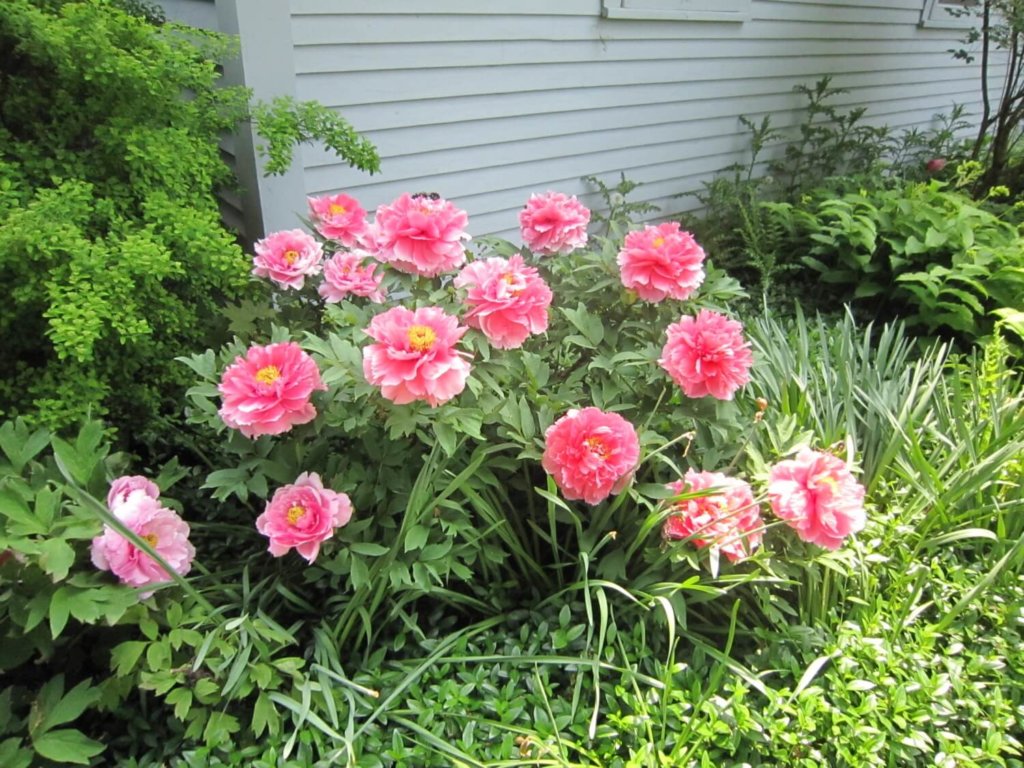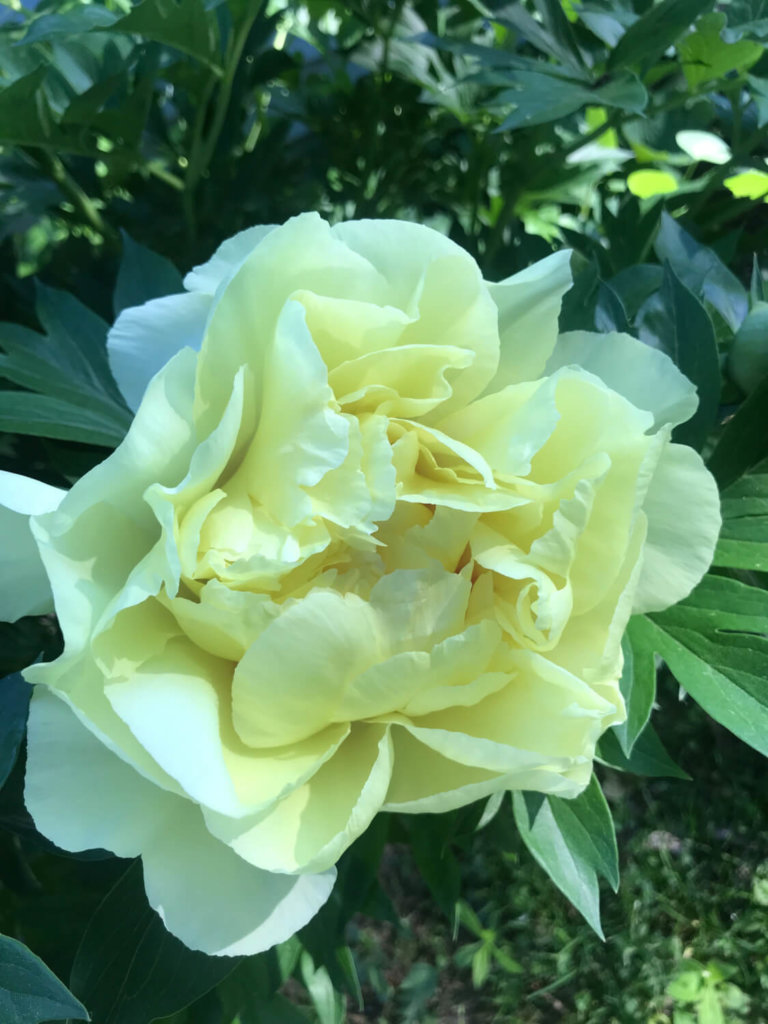Warriors in the garden create the best garden in years

The blessing of a rainy spring has brought great joy to me and my mature garden. I’ve been musing, with this “best garden in years,” about how long-lasting so many of its offerings are. We’ve been in this home for 23 years now, and some of my plot’s stalwarts have been here even before that. As we age and yet still want a beautiful landscape, we depend more and more on these tried and true warriors of the plant world.
The aforementioned warriors are made up of trees, shrubs and herbaceous perennials. We have learned which are “short-lived” and which go on like the Energizer Bunny and keep bringing smiles to our faces. The two majestic oaks were but mere saplings 23 years ago. The sugar maples have grown to towering heights and have needed pruning to raise their canopies and keep from encroaching on the house. What a joy they are come October and leaf peeping time. Apple trees offer interest for more than one season, and fruit!
Shrubs have grown in concert as well, and pruning to keep them in bounds has been essential. Indeed, one must be brave and vigorously trim back. They may look ugly for a time, but you will be rewarded with luscious blooms and new foliage.
Some of the stalwarts in the shrub category are azaleas, rhododendrons, clethra (summersweet), kalmia (mountain laurel), forsythia and viburnums of many cultivars. I recently trimmed back to ground level a red-twigged dogwood. Since the red coloring only appears on new growth, its red color was showing only way up top these days.
We’ve had Ilex merservae for many years, and some needed removal to repair some underground water lines. Their replacement was a different form of holly called winterberry. Being in its second year, now I see loads of green berries that will turn bright red come winter. This is a rewarding winter interest shrub. Male and female varieties are needed to produce fruit.
There are some newer cultivars of boxwood that thrive in Vermont. One is called “Green Mountain” and another “Green Velvet.” There are more. The southern boxwood is iffy for hardiness and also has been plagued with disease of late.
Another favorite is cotinus, or smokebush. The “Royal Purple” cultivar is a nice accent in the garden and takes well to coppicing. Some people love the ethereal blossoms, but the burgundy foliage is what attracts me to it.
Hydrangeas can live for decades and take so many forms. Then there are weigelias, which have tubular pink blooms, and some newer cultivars sport burgundy foliage. Spireas come in white and pink blooms and ‘Limelight’ has wonderful bright foliage. And lilacs! Don’t forget the lilacs.
Mature size is a good thing to consider, as well as focal points and foliage color, blooms, etc. If you are going to live with a plant for 30 years you need to know how large it will get. Among the perennials for ease of maintenance are peonies, both herbaceous and tree types, hostas, baptisia, feverfew, coreopsis, verbascum, daylilies, phlox, lobelias and oenothera (evening primrose). I have some others that are favorites that I use to intersperse with these long-lived examples just because I must have them.
Ornamental grasses, chosen carefully, will live on for years and make a home for solitary bees and other insects. Winter interest is a bonus, and their spiky nature adds a different aspect to the design.

Back to peonies for a moment. I have discovered Itoh peonies that are a marriage of herbal and tree peonies with the best attributes of each coming through. My original yellow one has proven its worth, and this year I added two new ones. The foliage is clean and upright. No staking needed, and it dies to the ground in winter.
Through the years, I’ve also learned which are hardy, but maybe too much so. Thugs are out there and ready to devour favorites while thriving. Here’s where your local nursery person or gardening books and magazines can be valuable. Plan ahead! When something is offered for “free” or as a gift it’s not because it’s a rarity, usually. Another thing to consider is whether a plant is a native – here’s a favorite site for identifying and for determining whether certain plants are native. I subscribe to the Facebook Group called Native Plants of New England. Ask to join and you will learn a lot.
Since I began writing I had occasion to visit a friend’s mature garden. We are about at the same stage of development as far as the garden goes. Our gardens’ personalities reflect our own and yet have similar focal points. We like a lot of the same plants too. Like clematis!
Don’t miss opportunities to share ideas and plants with friends. After all, that’s the fun of gardening.

